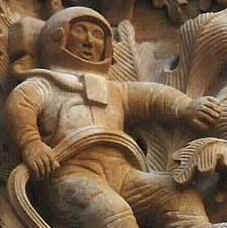
Within political, scientific and military circles it is generally accepted that E.B.E’s have visited this planet throughout history. This acceptance is due in part to overwhelming evidence located within ancient text and records. Legends from every known civilization on the planet verify the existence and in some cases the assistance of Ancient Astronauts. Ancient text, drawings, myths and legends from past cultures seem to confirm beings of greater intelligence and wisdom did in fact descend from the skies. Signs of these visitation can still be viewed today. Tiahuanaco in the Andes, Stonehenge in England, Baalbek in Lebanon, Nasca in Peru, Easter Island and the Egyptian and Mayan pyramids are but a few examples..
Establishing some form of truth regarding the existence of these Ancient visitors is not an easy objective, compounded to the tenth by the disappearance or destruction of many 2000 year old antiquity records by Greek and Roman authors. These missing writings, have created in part the many speculations and assumptions that cloud this subject. So to establish a more realistic percentage of actuality regarding the existence of “Ancient Astronauts”, one must use an alternative source.
This can be achieved By researching other surviving ancient text, artwork, cave drawings, myths and legends, enabling us to establish with a degree of certainty that “Ancient Astronauts” did or did not visit our planet. Hopefully the study of these alternatives will allow for a more factual based appraisal of the Ancient Astronaut theory and not just the current accepted speculative one.
Concluding with absolute certainty that this planet was ever visited by extraterrestrial beings or that the occupants of these craft intervened into the Social and Religious practices of ancient civilisations is near impossible.This blog is not intended to put forth reason’s for these supposed visitations nor to speculate whether or not the visitors interfered with human evolution by influencing ancient cultural actions and spiritual beliefs, agricultural and advanced engineering methods. I am merely trying to establish via surviving ancient text, Cave drawings, myths and legends, dead sea scrolls etc, whether or not there is solid evidence to support the “Ancient Astronaut” visitation theory.
Many Scientist and astrophysicist support the opinion that advanced intelligent entities may indeed exists in our universe, in fact, there is a firm belief among some that E.B.E’s could indeed have visited our planet in ancient times. These scientist assumptions, if correct, confirm one thing for sure, the ancient Gods of Egypt, Greece, Rome, Scandinavia and Mexico were not necessarily disembodied Spirits or anthropomorphic symbolism as portrayed by theologians but possibly actual beings visiting from a currently unknown inter-dimensional or extraterrestrial location….. K.P

The Dogon tribesmen of Mall, West Africa, (dating to around 3200 BC) had astronomical knowledge which these native people could not possibly have learned by themselves.
Obviously, this information was made available to them by someone or something with far superior knowledge of our solar system structure. Things like, Jupiter’s four moons and Saturn’s rings, which were not seen by human beings until the invention of the telescope in 1609 by Galileo. The legend also speaks of the star Sirius and of a pair of invisible companions. It also states that one of these invisible companions circles Sirius every 50 years, is made of metal and is the heaviest known thing in the universe.
NOTE: Modern day astronomers have indeed discovered that such an object does exist (Sirius-B) but only the most sophisticated and sensitive instruments currently used today can detect it. As for Sirius B being made of metal and the heaviest thing universally, that is yet to be confirmed and probably never will be.
Apollodorus wrote, “Sky was the first who ruled over the whole world,”
The Roman Emperor Julian vowed, “We must believe that on this world… certain Gods alighted.”
Aeschylus, Euripides, Aristophanes, Plautus and Menander frequently introduced a “Deus ex Machine” (a God from a Machine) to untangle and explain the plots of their plays.
Aristotle, Plato, Pliny, Lucretius and most other philosophers throughout times past believed that the Gods were supermen living in the realms above.
==========================================================================
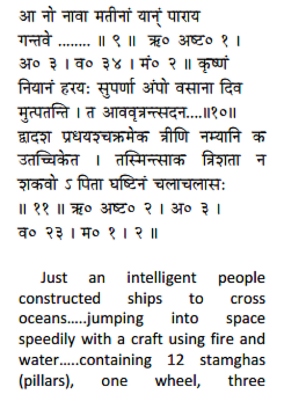 B. C 14 ,000 A fourth century BC text written by Maharshi Bhardwaj, was discovered in a temple in India. The book dealt with the operation of ancient vimanas and included information on steering, precautions for long flights, protection of the airships from storms and lightning, and how to switch the drive to some other “free energy” source, possibly some sort of “gravity drive .” Indian texts from this period tell of anti-gravity space ships called Vimanas, or Astras, In them they describe vimana, as being used for three purposes.
B. C 14 ,000 A fourth century BC text written by Maharshi Bhardwaj, was discovered in a temple in India. The book dealt with the operation of ancient vimanas and included information on steering, precautions for long flights, protection of the airships from storms and lightning, and how to switch the drive to some other “free energy” source, possibly some sort of “gravity drive .” Indian texts from this period tell of anti-gravity space ships called Vimanas, or Astras, In them they describe vimana, as being used for three purposes.
1 those that travel from place to place;
2. those that travel from one country to another;
3. those that travel between planets.
The Ramayana describes a Vimana as a double-deck, circular (cylindrical) aircraft with portholes and a dome. It flew with the speed of the wind. Ancient Indian texts on Vimanas are so numerous it would take several books to relate what they have to say. The ancient Indians themselves wrote entire flight manuals on the control of the various types of Vimanas which consisted of 4 types.:
1 the Shakuna Vimana,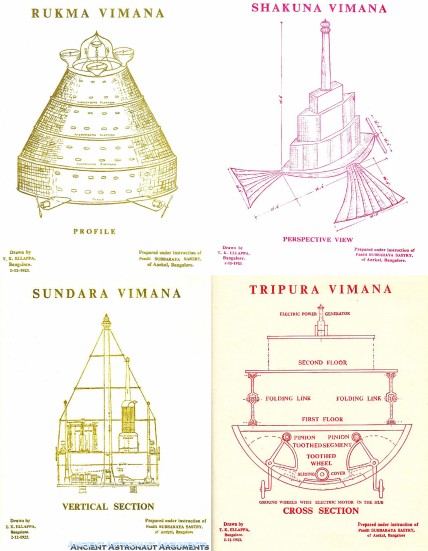
2 the Sundara Vimana,
3 the Rukma Vimana
4 the Tripura Vimana.
These manuals specified that the craft had to be Impregnable, unbreakable, non-combustible and indestructible also capable of coming to a dead stop in the twinkling of an eye; invisible to enemies; capable of listening to the conversations and sounds in hostile planes; technically proficient to see and record things, persons, incidents and situations going on inside enemy planes; know at every stage the direction of the movement of other aircraft in the vicinity; capable of rendering the enemy crew into a state of suspended animation, intellectual torpor or complete loss of consciousness; capable of destruction; manned by pilots and co-travellers who could adapt in accordance with the climate in which they moved; temperature regulated inside; constructed of very light and heat absorbing metals and enhance or diminish sounds.
Vimana Aerial battles and chases are common in ancient Hindu literature. The ancient Mahabharata speaks of a vimana as “an aerial chariot with the sides of iron and clad with wings.”
NOTE : The above flying vehicle descriptions and there use, comes via ancient texts past down through the centuries. There is no doubt or scientific dispute that these texts are authentic.
B C 4250 (India) The Ramayana describes flying machines, that navigated at great heights with the aid of quicksilver and a great propulsive wind. A beautiful chariot which ‘arrived shining speeding through the air’. In another passage, there is mention of a chariot being seen ‘sailing overhead like a moon’ “. The magnificent chariot rose up to a mountain of cloud with a Tremendous din. Another passage reads: Bhima flew with his Vimana on an enormous ray which was as brilliant as the sun. The text’s revelations become even more astounding, thirty-one parts of which the machine consists are described, including a photographing mirror underneath.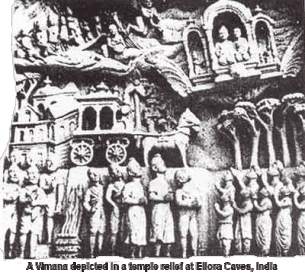
The text also enumerates 16 kinds of metal that are needed to construct the flying vehicle, but only three of them are known to us today. The rest of the text remain untranslatable.” The ancient Indian Vedas and other text refer to aeronautics, spaceships, flying machines, ancient astronauts. “A study of the Sanskrit texts has convinced many scholars and scientist that ancient India did know the secret of building flying machines.
BC 4000 Mesopotamia (SUMERIANS ) Seen as one of archaeology’s oldest recorded ancient civilization, Sumerians lived in the rich and fertile valley between the Tigris and Euphrates rivers ( modern day Iraq.) This ancient civilization is one of history’s greatest evidence of direct influence by extraterrestrials on the human population via agriculture and the advancement of our social civilization. Many religions, occult’s, and cults are based on the old writings of the Sumerian people and what they described as their creation by ancient technological beings who came from the sky.
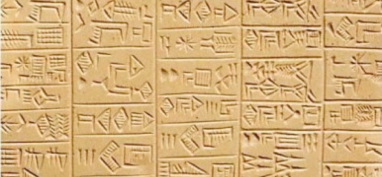
The Sumerians had contact with extraterrestrial civilizations and according to their text the extraterrestrials also interbred with humans and travelled with them to the stars. The kings were taken to the stars by the extraterrestrials.
NOTE: Sumerian text coincides with “the book of genesis”. These Aliens resembled the Anunnaki. (Those who came from heaven to earth) .The ancient text left by the Sumerians were left un- deciphered till Zecharia Sitchin, deciphered more than 2,000 clay cylinders that existed 6,000 years ago. Some of these fragments, which date to 4,000 B.C., are currently displayed in museums around the world.
Described in both the Mahabharata and the Bhagavad Purana, is a war with an extraterrestrial being and the giving of an aerial vehicle with weapons unheard of at that time. “ Shiva had been given an aerial vehicle called the Saubha which was as big as a palace, which had miraculous powers like becoming invisible and appearing at different places at the same time.”
“ He flew over Dwaraka in the Saubha ( Flying machine) and destroyed the outer woodlands and gardens. He then directed his attack against the bastions of the city so that his army which was marching over land could easily penetrate it. Flashes of lightning, hail stones, cyclonic storms and clouds of dust were released from the Saubha.”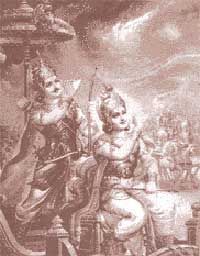
“Lord Krishna heard of the attack and hurried to his son’s rescue and there ensued a mighty war between the super human, Krishna and the alien- Salva. In this Krishna is said to have fired arrows which resembled thunderbolts and balls of lightning and brilliant piercing rays of the sun.” The weapons used by Salva makes one suspect that he was using alien technology. His spacecraft made of metal seemed to appear simultaneously at different places like the UFOs. “Very soon he brought the Saubha down with one of his miraculous astras (missiles), charged with the power of potent mantras.”
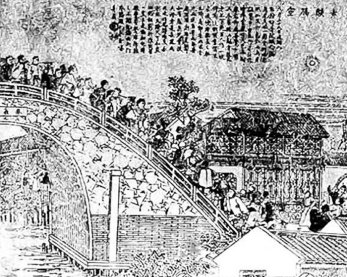
BC 3000 (China) in China, in the third millennium B.C., before the birth of Huang Ti or of Chi You , “sons from the sky”, would descend to Earth on a star which was the shape of a saucer.
NOTE From the book ” Memories of the Sovereigns and the Kings ” published in the 3rd century AD, written in the second century B.C. speaks of a deity appearing in a chariot drawn by flying dragons The, Hsui-nan-tzu, Early Chinese writings tell of a time in earth’s early history when god-like beings were in charge of people. These gods came down from heaven in the bellies of dragons. Later the ancient people witnessed how the gods and goddesses rode on the backs of the dragons across the skies.
NOTE: The ancient Chinese dragons had the ability to change colour and disappear out of sight in an instant. Additionally, these flying dragons could rise to the skies as well as plunge into waters. They also had abilities to make their bodies large or small as they pleased. In many ancient Chinese texts we frequently learn that “the dragon is born up to heavens; at the same time, it is also able to plunge into the depths of the oceans Most intriguing about these thousands of years old descriptions is the similarity if not exact descriptions of today’s UFO sightings including the dragons plunging into the ocean. These are know today as USO’S Unidentified Submersible or Submarine Objects.
504 BC: The below excerpt is believed to be one of the earliest found written accounts of an aerial phenomena experience in Egypt, it was written on Egyptian papyrus during the reign of Thutmose III.

‘In the year 22… sixth hour of the day… the scribes of the House of Life found it was a circle of fire that was coming in the sky… it had no head, (cylindrical) the breath of its mouth had a foul odour. (modern day UFO reports record a strong phosphorous smell being present) Its body one rod long and one rod wide. (5 mtrs x 5 mtrs or 16 1/2 feet x 16 1/2 feet) It had no voice… (silent) Now after some days had passed, these things became more numerous in the skies than ever… ‘They shone more in the sky than the brightness of the sun and extended to the four supports of the heavens… Powerful was the position of the fire circles… “Thereupon these fire circles ascended higher in the sky towards the south…
Note: After this strange phenomena occurred It was ordered by the Pharaoh to be written in the annals of the House of Life… so that it be remembered for ever.’
B.C 500 Flying Machines In the ancient Indian text Samarangana Sartradhara there is a description of piloted flying machines called vimanas. These were powered 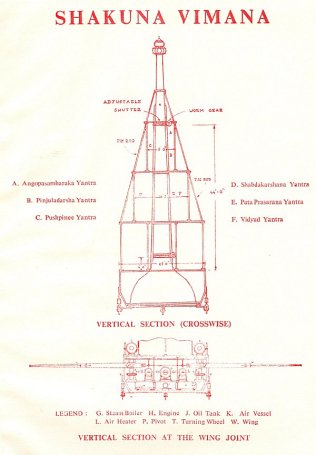 by some unknown source and they could ‘carry death’ to anywhere on earth.
by some unknown source and they could ‘carry death’ to anywhere on earth.
B.C. 498 Visitations “… Castor and Pollux were seen fighting in our army on horseback… Nor do we forget that when the Locrians defeated the people of Crotona in a battle on the banks of the river Sagra, it was known the same day at the Olympian Games. The voices of the Fauns have been heard and deities have appeared in forms so visible that they have compelled everyone who is not senseless or hardened to impiety to confess the presence of the Gods.” – Cicero, Of the nature of the Gods, Book I, Ch. 2
B.C. 325: Visitations “There in the stillness of the night both consuls are said to have been visited by the same apparition, a man of greater than human stature, and more majestic, who declared that the commander of one side and the army of the other must be offered up to the Manes and to Mother Earth.” – Livy, History, Book VIII, Ch. 11

B.C. 223: Bright Light, Three Moons “At Ariminium a bright light like the day blazed out at night; in many portions of Italy three moons became visible in the night time.” – Dio Cassius, Roman History, Book I
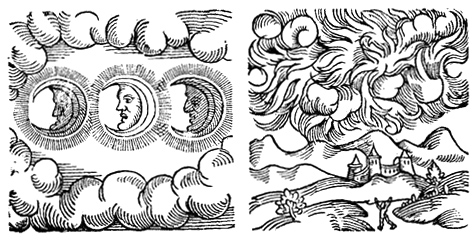 B.C. 222: Three Moons “Also three moons have appeared at once, for instance, in the consulship of Gnaeus Domitius and Gaius Fannius.” – Pliny, Natural History, Book II, Ch. 32
B.C. 222: Three Moons “Also three moons have appeared at once, for instance, in the consulship of Gnaeus Domitius and Gaius Fannius.” – Pliny, Natural History, Book II, Ch. 32
B.C. 218: The Sky Is Filled “In Amiterno district in many places were seen the appearance of men in white garments from far away. The orb of the sun grew smaller. At Praeneste glowing lamps from heaven. At Arpi a shield in the sky. The moon contended with the sun and during the night two moons were seen. Phantom ships appeared in the sky.” – Livy, History, Books XXI-XXII
B.C. 217: Fissure in the Sky “At Faleri the sky had seemed to be rent as it were with a great fissure and through the opening a bright light had shone.” – Livy, History, Book XXII, Ch. 1
BC 216: Julius Obsequens wrote in his book Prodigorium liber of how ‘things like ships were seen in the sky over Italy… At Apri a round shield was seen in the sky. At Capua, the sky was on fire, and one saw figures like ships.’
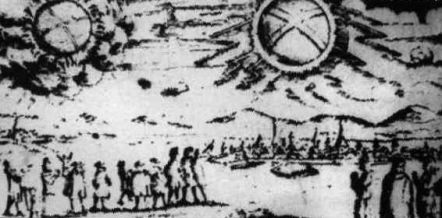
B.C. 214: Men and Altar “At Hadria an altar was seen in the sky and about it the forms of men in white clothes.” – Julius Obsequens, Prodigiorum Libellus, Ch. 66
 B.C. 163 : An Extra Sun “In the consulship of Tiberius Gracchus and Manius Juventus at Capua the sun was seen by night. At Formice two suns were seen by day. The sky was afire. In Cephallenia a trumpet seemed to sound from the sky. There was a rain of earth. A windstorm demolished houses and laid crops flat in the field. By night an apparent sun shone at Pisaurum.” – Obsequens, Prodigiorum, Ch 114
B.C. 163 : An Extra Sun “In the consulship of Tiberius Gracchus and Manius Juventus at Capua the sun was seen by night. At Formice two suns were seen by day. The sky was afire. In Cephallenia a trumpet seemed to sound from the sky. There was a rain of earth. A windstorm demolished houses and laid crops flat in the field. By night an apparent sun shone at Pisaurum.” – Obsequens, Prodigiorum, Ch 114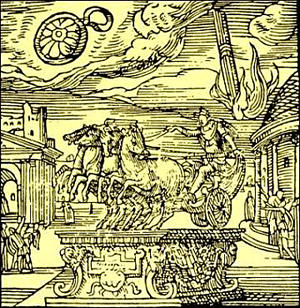
B.C. 122: Three Suns, Three Moons “In Gaul three suns and three moons were seen.” – Obsequens, Prodigiorum, Ch. 114
B.C. 81: Gold Fireball “Near Spoletium a gold-colored fireball rolled down to the ground, increased in size; seemed to move off the ground toward the east and was big enough to blot out the sun.” – Obsequens, Prodigiorum, Ch. 114
B.C. 85: Burning Shield, Sparks “In the consulship of Lucius Valerius and Caius Marius a burning shield scattering sparks ran across the sky. ” – Pliny, Natural History, Book II, Ch. 34
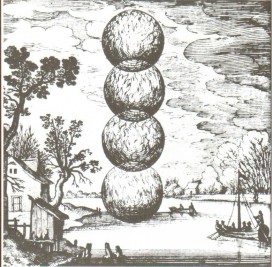 B.C. 66: From Spark to Torch “In the consulship of Gnaeus Octavius and Gaius Suetonius a spark was seen to fall from a star and increase in size as it approached the earth. After becoming as large as the moon it diffused a sort of cloudy daylight and then returning to the sky changed into a torch.He also told of how ‘a burning shield scattering sparks ran across the sky at sunset from east to west.’ This is the only record of its occurrence. It was seen by the proconsul Silenus and his suite. ” – Pliny, Natural History, Book II, Ch. 35
B.C. 66: From Spark to Torch “In the consulship of Gnaeus Octavius and Gaius Suetonius a spark was seen to fall from a star and increase in size as it approached the earth. After becoming as large as the moon it diffused a sort of cloudy daylight and then returning to the sky changed into a torch.He also told of how ‘a burning shield scattering sparks ran across the sky at sunset from east to west.’ This is the only record of its occurrence. It was seen by the proconsul Silenus and his suite. ” – Pliny, Natural History, Book II, Ch. 35
B.C. 48: Thunderbolts, Visitations “Thunderbolts had fallen upon Pompey’s camp. A fire had appeared in the air over Caesar’s camp and had fallen upon Pompey’s … In Syria two young men announced the result of the battle (in Thessaly) then vanished.” – Dio Cassius, Roman History, Book IV
B.C. 42: Night Light, Three Suns “In Rome light shone so brightly at nightfall that people got up to begin work as though day had dawned. At Murtino three suns were seen about the third hour of the day, which presently drew together in a single orb.” – Obsequens, Prodigiorum, Ch. 130B.C.?: Suns, Moons, Globes “How often has our Senate enjoined the decemvirs to consult the books of the Sibyl: For instance, when two suns had been seen or when three moons had appeared and when flames of fire were noticed in the sky; or on that other occasion when the sun was beheld in the night, when noises were heard in the sky, and the heaven itself seemed to burst open, and strange globes were remarked in it.” – Cicero, On Divination, Book I, Ch. 43
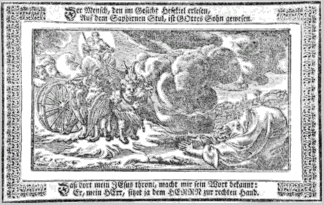 A.D. 70: Chariots in the Sky “On the 2lst of May a demonic phantom of incredible size… For before sunset there appeared in the air over the whole country chariots and armed troops coursing through the clouds and surrounding the cities.” – Josephus, Jewish War, Book CXI
A.D. 70: Chariots in the Sky “On the 2lst of May a demonic phantom of incredible size… For before sunset there appeared in the air over the whole country chariots and armed troops coursing through the clouds and surrounding the cities.” – Josephus, Jewish War, Book CXI
A.D 180: In Japan something similar to a flying saucer was seen, though they described this as a flying ‘earthenware vessel.’ The object or UFO was heading in a northeast direction from a mountain in the Kii province. This suddenly changed direction and vanished below the horizon, leaving a luminous trail.
A.D. 193: Three New Stars “Three stars … suddenly came into view surrounding the sun, when Emperor Julianus in our presence was offering the Sacrifice of Entrance in front of the Senate House. These stars were so very distinct that the soldiers kept continually looking at them and pointing them out to another . . . ” – Dio Cassius, Roman History, Book LXXIV
A.D. 217: Visitation “In Rome, moreover, a `Spirit’ having the appearance of a man led an ass up to the Capitol and afterwards to the palace seeking its master as he claimed and stating that Antoninus was dead and Jupiter was now Emperor. Upon being arrested for this and sent by Matermainus to Antoninus he said, `I go as you bid but I shall face not this emperor but another.’ And when he reached Capua he vanished. ” – Dio Cassius, Roman History
A.D 290: The monks at Byland Abbey in Yorkshire spotted a ‘large round silver disk’ passing through the skies.
A.D 584: St. Gregory, the bishop of Tours in France, recorded various sightings in his Historia Francorum. ‘There appeared in the sky brilliant rays of light which seemed to cross and collide with one another.’ He also described ‘golden globes’ which flashed at speed across the skies of France.

A.D. 776: Monk Lawrence stood marveling at flaming shields from heaven that were spitting fire at the Saxons besieging Sigiburg,
A.D 793: The Anglo-Saxon Chronicle reports, ‘In this year terrible portents appeared in Northumbria (England) and miserably afflicted the inhabitants. These were exceptional flashing and lightning and fiery dragons seen flying through the air.’
1170: Roger Niger described ‘a wonderfully large dragon’ which was ‘borne up from earth though the air. The air was kindled into fire by its motion and burned a house, reducing it and its outbuildings to ashes.’ This was seen at Osyth, Essex, England.
1561: This time the sighting was in Nuremberg in Germany where it was said that there was ‘a very frightful spectacle.’ During daylight glowing tubes, globes and crosses were seen in the sky and appeared to do battle. This lasted for an hour and some then fell to the earth as ‘if on fire.’
Romans fervently believed that two strange horsemen, taller than normal men, alike in age, height and beauty, saved the day for Posthumus at Lake Regillus and, that same day, miraculously appeared in the Forum, announced the victory, and departed forever.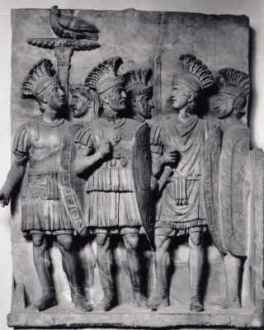
The above references are only a sampling of the evidence available. Consider just four writers: Julius Obsequens recorded 63 celestial phenomena; Livy, 30; Pliny, 26; Dio Cassius, 14; Cicero, 9.
A contemporary historian described two shiny shields spitting fire around the rims, diving repeatedly at the columns of Alexander the Great in India, stamping horses and elephants, and then returning to the sky.
When we recall that Romulus was borne to heaven by a whirlwind while giving judgment on the Palatine Hill, that his successor Numa Pomilius, used magic weapons, that Livy, Pliny the Elder, and Julius Obsequens tell of mysterious voices, celestial trumpets, men in white garments hovering in airships, several suns and moons together, sudden new stars, and superhuman apparitions descending among men and then vanishing, we suddenly feel we are reading the wonders of the Bible.
By some strange twist of the human mind, we worship prodigies in old Palestine as manifestations of the Lord, yet scoff at identical phenomena occurring at the same time only a few hundred miles away.
Evidence exists; all we need to do is examine it.
The Evidence for Ancient Atomic Warfare
Religious texts and geological evidence suggest that several parts of the world have experienced destructive atomic blasts in ages past

When the first atomic bomb exploded in New Mexico, the desert sand turned to fused green glass. This fact, according to the magazine Free World, has given certain archaeologists a turn. They have been digging in the ancient Euphrates Valley and have uncovered a layer of agrarian culture 8,000 years old, and a layer of herdsman culture much older, and a still older caveman culture. Recently, they reached another layer.of fused green glass.
It is well known that atomic detonations on or above a sandy desert will melt the silicon in the sand and turn the surface of the Earth into a sheet of glass. But if sheets of ancient desert glass can be found in various parts of the world, does it mean that atomic wars were fought in the ancient past or, at the very least, that atomic testing occurred in the dim ages of history?
This is a startling theory, but one that is not lacking in evidence, as such ancient sheets of desert glass are a geological fact. Lightning strikes can sometimes fuse sand, meteorologists contend, but this is always in a distinctive root-like pattern. These strange geological oddities are called fulgurites and manifest as branched tubular forms rather than as flat sheets of fused sand. Therefore, lightning is largely ruled out as the cause of such finds by geologists, who prefer to hold onto the theory of a meteor or comet strike as the cause. The problem with this theory is that there is usually no crater associated with these anomalous sheets of glass.
Brad Steiger and Ron Calais report in their book, Mysteries of Time and Space 1 that Albion W. Hart, one of the first engineers to graduate from Massachusetts Institute of Technology, was assigned an engineering project in the interior of Africa. While he and his men were travelling to an almost inaccessible region, they first had to cross a great expanse of desert.
“At the time he was puzzled and quite unable to explain a large expanse of greenish glass which covered the sands as far as he could see,” writes Margarethe Casson in an article on Hart’s life in the magazine Rocks and Minerals (no. 396, 1972). She then goes on to mention: “Later on, during his life.he passed by the White Sands area after the first atomic explosion there, and he recognized the same type of silica fusion which he had seen fifty years earlier in the African desert.”2
Tektites: A Terrestrial Explanation?
Large desert areas strewn with mysterious globules of “glass”–known as tektites–are occasionally discussed in geological literature. These blobs of “hardened glass” (glass is a liquid, in fact) are thought to come from meteorite impacts in most instances, but the evidence shows that in many cases there is no impact crater.
Another explanation is that tektites have a terrestrial explanation–one that includes atomic war or high-tech weapons capable of melting sand. The tektite debate was summed up in an article entitled “The Tektite Problem”, by John O’Keefe, published in the August 1978 edition of Scientific American. Said O’Keefe:
If tektites are terrestrial, it means that some process exists by which soil or common rocks can be converted in an instant into homogeneous, water-free, bubble-free glass and be propelled thousands of miles above the atmosphere. If tektites come from the Moon, it seems to follow that there is at least one powerful volcano somewhere on the Moon that has erupted at least as recently as 750,000 years ago. Neither possibility is easy to accept. Yet one of them must be accepted, and I believe it is feasible to pick the more reasonable one by rejecting the more unlikely.
The key to solving the tektite problem is an insistence on a physically reasonable hypothesis and a resolute refusal to be impressed by mere numerical coincidences such as the similarity of terrestrial sediments to tektite material. I believe that the lunar volcanism hypothesis is the only one physically possible, and that we have to accept it. If it leads to unexpected but not impossible conclusions, that is precisely its utility.
To cite just one example of the utility, the lunar origin of tektites strongly supports the idea that the Moon was formed by fission of the Earth. Tektites are indeed much more like terrestrial rocks than one would expect of a chance assemblage. If tektites come from a lunar magma, then deep inside the Moon there must be material that is very much like the mantle of the Earth–more like the mantle than it is like the shallower parts of the Moon from which the lunar surface basalts have originated. If the Moon was formed by fission of the Earth, the object that became the Moon would have been heated intensely and from the outside, and would have lost most of its original mass and in particular the more volatile elements. The lavas constituting most of the Moon’s present surface were erupted early in the Moon’s history, when its heat was concentrated in the shallow depleted zone quite near the surface. During the recent periods represented by tektite falls, the sources of lunar volcanism have necessarily been much deeper, so that any volcanoes responsible for tektites have drawn on the lunar material that suffered least during the period of ablation and is therefore most like unaltered terrestrial mantle material. Ironically, that would explain why tektites are in some ways more like terrestrial rocks than they are like the rocks of the lunar surface.
Mysterious Glass in the Egyptian Sahara

One of the strangest mysteries of ancient Egypt is that of the great glass sheets that were only discovered in 1932. In December of that year, Patrick Clayton, a surveyor for the Egyptian Geological Survey, was driving among the dunes of the Great Sand Sea near the Saad Plateau in the virtually uninhabited area just north of the southwestern corner of Egypt, when he heard his tyres crunch on something that wasn’t sand. It turned out to be large pieces of marvellously clear, yellow-green glass.
In fact, this wasn’t just any ordinary glass, but ultra-pure glass that was an astonishing 98 per cent silica. Clayton wasn’t the first person to come across this field of glass, as various ‘prehistoric’ hunters and nomads had obviously also found the now-famous Libyan Desert Glass (LDG). The glass had been used in the past to make knives and sharp-edged tools as well as other objects. A carved scarab of LDG was even found in Tutankhamen’s tomb, indicating that the glass was sometimes used for jewellery.
An article by Giles Wright in the British science magazine New Scientist (July 10, 1999), entitled “The Riddle of the Sands”, says that LDG is the purest natural silica glass ever found. Over a thousand tonnes of it are strewn across hundreds of kilometres of bleak desert. Some of the chunks weigh 26 kilograms, but most LDG exists in smaller, angular pieces–looking like shards left when a giant green bottle was smashed by colossal forces.
According to the article, LDG, pure as it is, does contain tiny bubbles, white wisps and inky black swirls. The whitish inclusions consist of refractory minerals such as cristobalite. The ink-like swirls, though, are rich in iridium, which is diagnostic of an extraterrestrial impact such as a meteorite or comet, according to conventional wisdom. The general theory is that the glass was created by the searing, sand-melting impact of a cosmic projectile.
However, there are serious problems with this theory, says Wright, and many mysteries concerning this stretch of desert containing the pure glass. The main problem: Where did this immense amount of widely dispersed glass shards come from? There is no evidence of an impact crater of any kind; the surface of the Great Sand Sea shows no sign of a giant crater, and neither do microwave probes made deep into the sand by satellite radar.
Furthermore, LDG seems to be too pure to be derived from a messy cosmic collision. Wright mentions that known impact craters, such as the one at Wabar in Saudi Arabia, are littered with bits of iron and other meteorite debris. This is not the case with the Libyan Desert Glass site. What is more, LDG is concentrated in two areas, rather than one. One area is oval-shaped; the other is a circular ring, six kilometres wide and 21 kilometres in diameter. The ring’s wide centre is devoid of the glass.
One theory is that there was a soft projectile impact: a meteorite, perhaps 30 metres in diameter, may have detonated about 10 kilometres or so above the Great Sand Sea, the searing blast of hot air melting the sand beneath. Such a craterless impact is thought to have occurred in the 1908 Tunguska event in Siberia–at least as far as mainstream science is concerned. That event, like the pure desert glass, remains a mystery.
Another theory has a meteorite glancing off the desert surface, leaving a glassy crust and a shallow crater that was soon filled in. But there are two known areas of LDG. Were there two cosmic projectiles in tandem?
Alternatively, is it possible that the vitrified desert is the result of atomic war in the ancient past? Could a Tesla-type beam weapon have melted the desert, perhaps in a test?
An article entitled “Dating the Libyan Desert Silica-Glass” appeared in the British journal Nature (no. 170) in 1952. Said the author, Kenneth Oakley:3
Pieces of natural silica-glass up to 16 lb in weight occur scattered sparsely in an oval area, measuring 130 km north to south and 53 km from east to west, in the Sand Sea of the Libyan Desert. This remarkable material, which is almost pure (97 per cent silica), relatively light (sp. gin. 2.21), clear and yellowish-green in colour, has the qualities of a gemstone. It was discovered by the Egyptian Survey Expedition under Mr P.A. Clayton in 1932, and was thoroughly investigated by Dr L.J. Spencer, who joined a special expedition of the Survey for this purpose in 1934.
The pieces are found in sand-free corridors between north-south dune ridges, about 100 m high and 2-5 km apart. These corridors or “streets” have a rubbly surface, rather like that of a “speedway” track, formed by angular gravel and red loamy weathering debris overlying Nubian sandstone. The pieces of glass lie on this surface or partly embedded in it. Only a few small fragments were found below the surface, and none deeper than about one metre. All the pieces on the surface have been pitted or smoothed by sand-blast. The distribution of the glass is patchy.
While undoubtedly natural, the origin of the Libyan silica-glass is uncertain. In its constitution it resembles the tektites of supposed cosmic origin, but these are much smaller. Tektites are usually black, although one variety found in Bohemia and Moravia and known as moldavite is clear deep-green. The Libyan silica-glass has also been compared with the glass formed by the fusion of sand in the heat generated by the fall of a great meteorite; for example, at Wabar in Arabia and at Henbury in central Australia.
Reporting the findings of his expedition, Dr Spencer said that he had not been able to trace the Libyan glass to any source; no fragments of meteorites or indications of meteorite craters could be found in the area of its distribution. He said: “It seemed easier to assume that it had simply fallen from the sky.”
It would be of considerable interest if the time of origin or arrival of the silica-glass in the Sand Sea could be determined geologically or archaeologically. Its restriction to the surface or top layer of a superficial deposit suggests that it is not of great antiquity from the geological point of view. On the other hand, it has clearly been there since prehistoric times. Some of the flakes were submitted to Egyptologists in Cairo, who regarded them as “late Neolithic or pre-dynastic”. In spite of a careful search by Dr Spencer and the late Mr A. Lucas, no objects of silica-glass could be found in the collections from Tut-Ankh-Amen’s tomb or from any of the other dynastic tombs. No potsherds were encountered in the silica-glass area, but in the neighbourhood of the flakings some “crude spear-points of glass” were found; also some quartzite implements, “quernstones” and ostrich-shell fragments.
Oakley is apparently incorrect when he says that LDG was not found in Tutankhamen’s tomb, as according to Wright a piece was found.
At any rate, the vitrified areas of the Libyan Desert are yet to be explained. Are they evidence of an ancient war–a war that may have turned North Africa and Arabia into the desert that it is today?
The Vitrified Forts of Scotland
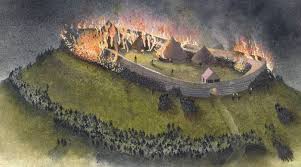
One of the great mysteries of classical archaeology is the existence of many vitrified forts in Scotland. Are they also evidence of some ancient atomic war? Maybe, but maybe not.
There are said to be at least 60 such forts throughout Scotland. Among the most well-known are Tap o’Noth, Dunnideer, Craig Phadraig (near Inverness), Abernathy (near Perth), Dun Lagaidh (in Ross), Cromarty, Arka-Unskel, Eilean na Goar, and Bute-Dunagoil on the Sound of Bute off Arran Island. Another well-known vitrified fort is the Cauadale hill-fort in Argyll, West Scotland.
One of the best examples of a vitrified fort is Tap o’Noth, which is near the village of Rhynie in northeastern Scotland. This massive fort from prehistory is on the summit of a mountain of the same name which, being 1,859 feet (560 metres) high, commands an impressive view of the Aberdeenshire countryside. At first glance it seems that the walls are made of a rubble of stones, but on closer look it is apparent that they are made not of dry stones but of melted rocks! What were once individual stones are now black and cindery masses, fused together by heat that must have been so intense that molten rivers of rock once ran down the walls.
Reports on vitrified forts were made as far back as 1880 when Edward Hamilton wrote an article entitled “Vitrified Forts on the West Coast of Scotland” in the Archaeological Journal (no. 37, 1880). In his article, Hamilton describes several sites in detail, including Arka-Unskel:4
At the point where Loch na Nuagh begins to narrow, where the opposite shore is about one-and-a-half to two miles distant, is a small promontory connected with the mainland by a narrow strip of sand and grass, which evidently at one time was submerged by the rising tide. On the flat summit of this promontory are the ruins of a vitrified fort, the proper name for which is Arka-Unskel.
The rocks on which this fort are placed are metamorphic gneiss, covered with grass and ferns, and rise on three sides almost perpendicular for about 110 feet from the sea level. The smooth surface on the top is divided by a slight depression into two portions. On the largest, with precipitous sides to the sea, the chief portion of the fort is situated, and occupies the whole of the flat surface. It is of somewhat oval form. The circumference is about 200 feet, and the vitrified walls can be traced in its entire length. We dug under the vitrified mass, and there found what was extremely interesting, as throwing some light on the manner in which the fire was applied for the purpose of vitrification. The internal part of the upper or vitrified wall for about a foot or a foot-and-a-half was untouched by the fire, except that some of the flat stones were slightly agglutinated together, and that the stones, all feldspatic, were placed in layers one upon another.
It was evident, therefore, that a rude foundation of boulder stones was first formed upon the original rock, and then a thick layer of loose, mostly flat stones of feldspatic sand, and of a different kind from those found in the immediate neighborhood, were placed on this foundation, and then vitrified by heat applied externally. This foundation of loose stones is found also in the vitrified fort of Dun Mac Snuichan, on Loch Etive.
Hamilton describes another vitrified fort that is much larger, situated on the island at the entrance of Loch Ailort.
This island, locally termed Eilean na Goar, is the most eastern and is bounded on all sides by precipitous gneiss rocks; it is the abode and nesting place of numerous sea birds. The flat surface on the top is 120 feet from the sea level, and the remains of the vitrified fort are situated on this, oblong in form, with a continuous rampart of vitrified wall five feet thick, attached at the SW end to a large upright rock of gneiss. The space enclosed by this wall is 420 feet in circumference and 70 feet in width. The rampart is continuous and about five feet in thickness. At the eastern end is a great mass of wall in situ, vitrified on both sides. In the centre of the enclosed space is a deep depression in which are masses of the vitrified wall strewed about, evidently detached from their original site.
Hamilton naturally asks a few obvious questions about the forts. Were these structures built as a means of defence? Was the vitrification the result of design or accident? How was the vitrification produced?
In this vitrification process, huge blocks of stones have been fused with smaller rubble to form a hard, glassy mass. Explanations for the vitrification are few and far between, and none of them is universally accepted.
One early theory was that these forts are located on ancient volcanoes (or the remains of them) and that the people used molten stone ejected from eruptions to build their settlements.
This idea was replaced with the theory that the builders of the walls had designed the forts in such a way that the vitrification was purposeful in order to strengthen the walls. This theory postulated that fires had been lit and flammable material added to produce walls strong enough to resist the dampness of the local climate or the invading armies of the enemy. It is an interesting theory, but one that presents several problems. For starters, there is really no indication that such vitrification actually strengthens the walls of the fortress; rather, it seems to weaken them. In many cases, the walls of the forts seem to have collapsed because of the fires. Also, since the walls of many Scottish forts are only partially vitrified, this would hardly have proved an effective building method.
Julius Caesar described a type of wood and stone fortress, known as a murus gallicus, in his account of the Gallic Wars. This was interesting to those seeking solutions to the vitrified fort mystery because these forts were made of a stone wall filled with rubble, with wooden logs inside for stability. It seemed logical to suggest that perhaps the burning of such a wood-filled wall might create the phenomenon of vitrification.
Some researchers are sure that the builders of the forts caused the vitrification. Arthur C. Clarke quotes one team of chemists from the Natural History Museum in London who were studying the many forts:5
Considering the high temperatures which have to be produced, and the fact that possibly sixty or so vitrified forts are to be seen in a limited geographical area of Scotland, we do not believe that this type of structure is the result of accidental fires. Careful planning and construction were needed.
However, one Scottish archaeologist, Helen Nisbet, believes that the vitrification was not done on purpose by the builders of the forts. In a thorough analysis of rock types used, she reveals that most of the forts were built of stone easily available at the chosen site and not chosen for their property of vitrification.6
The vitrification process itself, even if purposely set, is quite a mystery. A team of chemists on Arthur C. Clarke’s Mysterious World subjected rock samples from 11 forts to rigorous chemical analysis, and stated that the temperatures needed to produce the vitrification were so intense–up to 1,100°C–that a simple burning of walls with wood interlaced with stone could not have achieved such temperatures.7
Nevertheless, experiments carried out in the 1930s by the famous archaeologist V. Gordon Childe and his colleague Wallace Thorneycroft showed that forts could be set on fire and generate enough heat to vitrify the stone.8 In 1934, these two designed a test wall that was 12 feet long, six feet wide and six feet high, which was built for them at Plean Colliery in Stirlingshire. They used old fireclay bricks for the faces and pit props as timber, and filled the cavity between the walls with small cubes of basalt rubble. They covered the top with turf and then piled about four tons of scrap timber and brushwood against the walls and set fire to them. Because of a snowstorm in progress, a strong wind fanned the blazing mixture of wood and stone so that the inner core did attain some vitrification of the rock.
In June 1937, Childe and Thorneycroft duplicated their test vitrification at the ancient fort of Rahoy, in Argyllshire, using rocks found at the site. Their experiments did not resolve any of the questions surrounding vitrified forts, however, because they had only proven that it was theoretically possible to pile enough wood and brush on top of a mixture of wood and stone to vitrify the mass of stone. One criticism of Childe is that he seems to have used a larger proportion of wood to stone than many historians believe made up the ancient wood and stone fortresses.
An important part of Childe’s theory was that it was invaders, not the builders, who were assaulting the forts and then setting fire to the walls with piles of brush and wood; however, it is hard to understand why people would have repeatedly built defences that invaders could destroy with fire, when great ramparts of solid stone would have survived unscathed.
Critics of the assault theory point out that in order to generate enough heat by a natural fire, the walls would have to have been specially constructed to create the heat necessary. It seems unreasonable to suggest the builders would specifically create forts to be burned or that such a great effort would be made by invaders to create the kind of fire it would take to vitrify the walls–at least with traditional techniques.
One problem with all the many theories is their assumption of a primitive state of culture associated with ancient Scotland.
It is astonishing to think of how large and well coordinated the population or army must have been that built and inhabited these ancient structures. Janet and Colin Bord in their book, Mysterious Britain,9 speak of Maiden Castle to give an idea of the vast extent of this marvel of prehistoric engineering.
It covers an area of 120 acres, with an average width of 1,500 feet and length of 3,000 feet. The inner circumference is about 11Ú2 miles round, and it has been estimated…that it would require 250,000 men to defend it! It is hard, therefore, to believe that this construction was intended to be a defensive position.
A great puzzle to archaeologists has always been the multiple and labyrinthine east and west entrances at each end of the enclosure. Originally they may have been built as a way for processional entry by people of the Neolithic era. Later, when warriors of the Iron Age were using the site as a fortress, they probably found them useful as a means of confusing the attacking force trying to gain entry. The fact that so many of these “hill-forts” have two entrances–one north of east and the other south of west–also suggests some form of Sun ceremonial.
With 250,000 men defending a fort, we are talking about a huge army in a very organised society. This is not a bunch of fur-wearing Picts with spears defending a fort from marauding bands of hunter-gatherers. The questions remain, though. What huge army might have occupied these cliffside forts by the sea or lake entrances? And what massive maritime power were these people unsuccessfully defending themselves against?
The forts on the western coast of Scotland are reminiscent of the mysterious clifftop forts in the Aran Islands on the west coast of Ireland. Here we truly have shades of the Atlantis story, with a powerful naval fleet attacking and conquering its neighbours in a terrible war. It has been theorised that the terrible battles of the Atlantis story took place in Wales, Scotland, Ireland and England–however, in the case of the Scottish vitrified forts it looks as if these were the losers of a war, not the victors. And defeat can be seen across the land: the war dykes in Sussex, the vitrified forts of Scotland, the utter collapse and disappearance of the civilisation that built these things. What long-ago Armageddon destroyed ancient Scotland?
In ancient times there was a substance known through writings as Greek fire. This was some sort of ancient napalm bomb that was hurled by catapult and could not be put out. Some forms of Greek fire were even said to burn under water and were therefore used in naval battles. (The actual composition of Greek fire is unknown, but it must have contained chemicals such as phosphorus, pitch, sulphur or other flammable chemicals.)
Could a form of Greek fire have been responsible for the vitrification? While ancient astronaut theorists may believe that extraterrestrials with their atomic weapons vitrified these walls, it seems more likely that they are the result of a man-made apocalypse of a chemical nature. With siege machines, battleships and Greek fire, did a vast flotilla storm the huge forts and eventually burn them down in a hellish blaze?
The evidence of the vitrified forts is clear: some hugely successful and organised civilisation was living in Scotland, England and Wales in prehistoric times, circa 1000 BC or more, and was building gigantic structures including forts. This apparently was a maritime civilisation that prepared itself for naval warfare as well as other forms of attack.
Vitrified Ruins in France, Turkey and the Middle East
Vitrified forts in France are discussed in the American Journal of Science (vol. 3, no. 22, 1881) in an article entitled “On the Substances Obtained from Some ‘Forts Vitrifiés’ in France”, by M. Daubrée. The author mentions several forts in Brittany and northern France whose granite blocks have been vitrified. He cites the “partially fused granitic rocks from the forts of Château-vieux and of Puy de Gaudy (Creuse), also from the neighbourhood of Saint Brieuc (Côtes-du-Nord)”.10 Daubrée, understandably, could not readily find an explanation for the vitrification.
Similarly, the ruins of Hattusas in central Turkey, an ancient Hittite city, are partially vitrified. The Hittites are said to be the inventors of the chariot, and horses were of great importance to them. It is on the ancient Hittite stelae that we first see a depiction of the chariot in use. However, it seems unlikely that horsemanship and wheeled chariots were invented by the Hittites; it is highly likely that chariots were in use in ancient China at the same time.
The Hittites were also linked to the world of ancient India. Proto-Indic writing has been found at Hattusas, and scholars now admit that the civilisation of India, as the ancient Indian texts like the Ramayana have said, goes back many millennia.
In his 1965 book, The Bible as History,11 German historian Werner Keller cites some of the mysteries concerning the Hittites. According to Keller, the Hittites are first mentioned in the Bible (in Genesis 23) in connection with the biblical patriarch Abraham who acquired from the Hittites a burial place in Hebron for his wife Sarah. Conservative classical scholar Keller is confused by this, because the time period of Abraham was circa 2000-1800 BC, while the Hittites are traditionally said to have appeared in the 16th century BC.
Even more confusing to Keller is the biblical statement (in Numbers 13:29-30) that the Hittites were the founders of Jerusalem. This is a fascinating statement, as it would mean that the Hittites also occupied Ba’albek, which lies between their realm and Jerusalem. The TempleMount at Jerusalem is built on a foundation of huge ashlars, as is Ba’albek. The Hittites definitely used the gigantic megalithic construction known as cyclopean–huge, odd-shaped polygonal blocks, perfectly fitted together. The massive walls and gates of Hattusas are eerily similar in construction to those in the high Andes and other megalithic sites around the world. The difference at Hattusas is that parts of the city are vitrified, and the walls of rock have been partly melted. If the Hittites were the builders of Jerusalem, it would mean that the ancient Hittite Empire existed for several thousand years and had frontiers with Egypt. Indeed, the Hittite hieroglyphic script is undeniably similar to Egyptian hieroglyphs, probably more so than any other language.
Just as Egypt goes back many thousands of years BC and is ultimately connected to Atlantis, so does the ancient Hittite Empire. Like the Egyptians, the Hittites carved massive granite sphinxes, built on a cyclopean scale and worshipped the Sun. The Hittites also used the common motif of a winged disc for their Sun god, just as the Egyptians did. The Hittites were well known in the ancient world because they were the main manufacturers of iron and bronze goods. The Hittites were metallurgists and seafarers. Their winged discs may in fact have been representations of vimanas–flying machines.
Some of the ancient ziggurats of Iran and Iraq also contain vitrified material, sometimes thought by archaeologists to be caused by the Greek fire. For instance, the vitrified remains of the ziggurat at Birs Nimrod (Borsippa), south of Hillah, were once confused with the Tower ofBabel. The ruins are crowned by a mass of vitrified brickwork–actual clay bricks fused together by intense heat. This may be due to the horrific ancient wars described in the Ramayana and Mahabharata, although early archaeologists attributed the effect to lightning.
Greek Fire, Plasma Guns and Atomic Warfare

Just as battles in the 20th century have been fought with incredibly devastating weapons, it may well be that battles in the latter days of Atlantis were fought with highly sophisticated, high-tech weapons.
The mysterious Greek fire was a “chemical fireball”. Incendiary mixtures go back at least to the 5th century BC, when Aineias the Tactician wrote a book called On the Defence of Fortified Positions. Said he:12
And fire itself, which is to be powerful and quite inextinguishable, is to be prepared as follows. Pitch, sulphur, tow, granulated frankincense, and pine sawdust in sacks you should ignite if you wish to set any of the enemy’s works on fire.
- Sprague de Camp mentions in his book, The Ancient Engineers,13 that at some point it was found that petroleum, which seeps out of the ground in Iraq and elsewhere, made an ideal base for incendiary mixtures because it could be squirted from syringes of the sort then used in fighting fires. Other substances were added to it, such as sulphur, olive oil, rosin, bitumen, salt and quicklime.
Some of these additives may have helped–sulphur at least made a fine stench–but others did not, although it was thought that they did. Salt, for instance, may have been added because the sodium in it gave the flame a bright orange colour. The ancients, supposing that a brighter flame was necessarily a hotter flame, mistakenly believed that salt made the fire burn more fiercely. Such mixtures were put in thin wooden casks and thrown from catapults at hostile ships and at wooden siege engines and defence works.
According to de Camp, in AD 673 the architect Kallinikos fled ahead of Arab invaders from Helipolis-Ba’albek to Constantinople. There he revealed to Emperor Constantine IV an improved formula for a liquid incendiary. This could not only be squirted at the foe but could also be used with great effect at sea, because it caught fire when it touched the water and floated, flaming on the waves.
De Camp says that Byzantine galleys were armed with a flame-throwing apparatus in the bow, consisting of a tank of this mixture, a pump and a nozzle. With the help of this compound, the Byzantines broke the Arab sieges of AD 674-76 and AD 715-18, and also beat off the Russian attacks of AD 941 and 1043. The incendiary liquid wrought immense havoc; of 800 Arab ships which attacked Constantinople in 716 AD, only a handful returned home.
The formula for the wet version of Greek fire has never been discovered. Says de Camp:
By careful security precautions, the Byzantine Emperors succeeded in keeping the secret of this substance, called “wet fire” or “wild fire”, so dark that it never did become generally known. When asked about it, they blandly replied that an angel had revealed the formula to the first Constantine.
We can, therefore, only guess the nature of the mixture. According to one disputed theory, wet fire was petroleum with an admixture of calcium phosphide, which can be made from lime, bones and urine. Perhaps Kallinikos stumbled across this substance in the course of alchemical experiments.
Vitrification of brick, rock and sand may have been caused by any number of high-tech means. New Zealand author Robin Collyns suggests in his book, Ancient Astronauts: A Time Reversal?,14 that there are five methods by which the ancients or “ancient astronauts” might have waged war on various societies on planet Earth. He outlines how these methods are again on the rise in modern society. The five methods are: plasma guns, fusion torches, holes punched in the ozone layer, manipulation of weather processes and the release of immense energy, such as with an atomic blast. As Collyns’s book was published in Britain in 1976, the mentions of holes in the ozone layer and weather warfare seem strangely prophetic.
Explaining the plasma gun, Collyns says:
The plasma gun has already been developed experimentally for peaceful purposes: Ukrainian scientists from the Geotechnical Mechanics Institute have experimentally drilled tunnels in iron ore mines by using a plasmatron, i.e., a plasma gas jet which delivers a temperature of 6,000°C.
A plasma, in this case, is an electrified gas. Electrified gases are also featured in the Vymaanika-Shaastra,15 the ancient book from India on vimanas, which cryptically talks of using for fuel the liquid metal mercury, which could be a plasma if electrified.
Collyns goes on to describe a fusion torch:
This is still another possible method of warfare used by spacemen, or ancient advanced civilisations on Earth. Perhaps the solar mirrors of antiquity really were fusion torches? The fusion torch is basically a further development of the plasma jet. In 1970 a theory to develop a fusion torch was presented at the New York aerospace science meeting by Drs Bernard J. Eastlund and William C. Cough. The basic idea is to generate a fantastic heat of at least fifty million degrees Celsius which could be contained and controlled. That is, the energy released could be used for many peaceful applications with zero radioactive waste products to avoid contaminating the environment, or zero production of radioactive elements which would be highly dangerous, such as plutonium which is the most deadly substance known to man. Thermonuclear fusion occurs naturally in stellar processes, and unnaturally in man-made H-bomb explosions.
The fusion of a deuterium nucleus (a heavy hydrogen isotope which can be easily extracted from sea water) with another deuterium nucleus, or with tritium (another isotope of hydrogen) or with helium, could be used. The actual fusion torch would be an ionised plasma jet which would vaporise anything and everything that the jet was directed at–if…used for harmful purposes–while for peaceful applications, one use of the torch could be to reclaim basic elements from junk metals.
University of Texas scientists announced in 1974 that they had actually developed the first experimental fusion torch which gave an incredible heat output of ninety-three degrees Celsius. This is five times the previous hottest temperature for a contained gas and is twice the minimum heat needed for fusion, but it was held only for one fifty-millionth of a second instead of the one full second which would be required.
It is curious to note here that Dr Bernard Eastlund is the patent holder of another unusual device–one that is associated with the High-frequency Active Auroral Research Program (HAARP), based at Gakona, Alaska. HAARP is allegedly linked to weather manipulation–one of the ways in which Collyns thinks the ancients waged warfare.
As far as holes in the ozone layer and weather manipulation go, Collyns says:
Soviet scientists have discussed and proposed at the United Nations a ban on developing new warfare ideas such as creating holes or “windows” in the ozone layer to bombard specific areas of the Earth with increased natural ultra-violet radiation, which would kill all life-forms and turn the land into barren desert.
Other ideas discussed at the meeting were the use of “infrasound” to demolish ships by creating acoustic fields on the sea, and hurling a huge chunk of rock into the sea with a cheap atomic device. The resultant tidal wave could demolish the coastal fringe of a country. Other tidal waves could be created by detonating nuclear devices at the frozen poles. Controlled floods, hurricanes, earthquakes and droughts directed towards specific targets and cities are other possibilities.
Finally, although not a new method of warfare, incendiary weapons are now being developed to the point where “chemical fireballs” will be produced which radiated thermal energy similar to that of an atomic bomb.
Vitrified Ruins in California’s Death Valley: Evidence of Atomic War?
In Secrets of the Lost Races,16 Rene Noorbergen discusses the evidence for a cataclysmic war in the remote past that included the use of airships and weapons that vitrified stone cities.
The most numerous vitrified remains in the New World are located in the western United States. In 1850 the American explorer Captain Ives William Walker was the first to view some of these ruins, situated in Death Valley. He discovered a city about a mile long, with the lines of the streets and the positions of the buildings still visible. At the center he found a huge rock, between 20 to 30 feet high, with the remains of an enormous structure atop it. The southern side of both the rock and the building was melted and vitrified. Walker assumed that a volcano had been responsible for this phenomenon, but there is no volcano in the area. In addition, tectonic heat could not have caused such a liquefication of the rock surface.
An associate of Captain Walker who followed up his initial exploration commented: “The whole region between the rivers Gila and San Juan is covered with remains. The ruins of cities are to be found there which must be most extensive, and they are burnt out and vitrified in part, full of fused stones and craters caused by fires which were hot enough to liquefy rock or metal. There are paving stones and houses torn with monstrous cracks. [as though they had] been attacked by a giant’s fire-plough.”
These vitrified ruins in Death Valley sound fascinating–but do they really exist? There certainly is evidence of ancient civilisations in the area. In Titus Canyon, petroglyphs and inscriptions have been scratched into the walls by unknown prehistoric hands. Some experts think the graffiti might have been made by people who lived here long before the Indians we know of, because extant Indians know nothing of the glyphs and, indeed, regard them with superstitious awe.
Says Jim Brandon in Weird America:17
Piute legends tell of a city beneath Death Valley that they call Shin-au-av. Tom Wilson, an Indian guide in the 1920s, claimed that his grandfather had rediscovered the place by wandering into a miles-long labyrinth of caves beneath the valley floor.
Eventually the Indian came to an underworld city where the people spoke an incomprehensible language and wore clothing made of leather.
Wilson told this story after a prospector named White claimed he had fallen through the floor of an abandoned mine at Wingate Pass and into an unknown tunnel. White followed this into a series of rooms, where he found hundreds of leather-clad humanoid mummies. Gold bars were stacked like bricks and piled in bins.
White claimed he had explored the caverns on three occasions. On one, his wife accompanied him; and on another, his partner, Fred Thomason. However, none of them [was] able to relocate the opening to the cavern when they tried to take a group of archaeologists on a tour of the place.
Vitrified Ruins in California’s Death Valley
It seems one local character knew how to find the place. Brandon relates that “Death Valley Scotty”, an eccentric who spent millions building a castle-estate in the area, was known to go “prospecting” when funds ran low. Death Valley Scotty would check out for a few days of wandering in the nearby Grapevine Mountains, bringing back suspiciously refined-looking gold that he claimed he had prospected. Many believe that he got his gold from the stacked gold bars in the tunnel system beneath Death Valley.
Evidence of a lost civilisation in Death Valley came in a bizarre report of caves and mummies in the Hot Citizen, a Nevada paper, on August 5, 1947. The story ran as follows:
EXPEDITION REPORTS NINE-FOOT SKELETONS
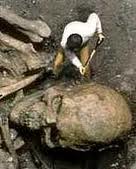
![4506440_orig[1]](https://thefactisblog.files.wordpress.com/2016/05/4506440_orig1.jpg?w=384&h=320)
A band of amateur archaeologists announced today they have discovered a lost civilization of men nine feet tall in Californian caverns. Howard E. Hill, spokesman for the expedition, said the civilization may be “the fabled lost continent of Atlantis”.
The caves contain mummies of men and animals and implements of a culture 80,000 years old but “in some respects more advanced than ours,” Hill said. He said the 32 caves covered a 180-square-mile area in California’s Death Valley and southern Nevada.
ARCHAEOLOGISTS SKEPTICAL
“This discovery may be more important than the unveiling of King Tut’s tomb,” he said.
Professional archaeologists were skeptical of Hill’s story. Los Angeles County Museum scientists pointed out that dinosaurs and tigers which Hill said lay side by side in the caves appeared on Earth 10,000,000 to 13,000,000 years apart.
Hill said the caves were discovered in 1931 by Dr F. Bruce Russell, Beverly Hills physician, who literally fell in while sinking a shaft for a mining claim.
“He tried for years to interest people in them,” Hill said, “but nobody believed him.”
Russell and several hobbyists incorporated after the war as Amazing Explorations, Inc. and started digging. Several caverns contained mummified remains of “a race of men eight to nine feet tall,” Hill said. “They apparently wore a prehistoric zoot suit–a hair garment of medium length, jacket and knee-length trousers.”
CAVERN TEMPLE FOUND
Another cavern contained their ritual hall with devices and markings similar to the Masonic order, he said.
“A long tunnel from this temple took the party into a room where,” Hill said, “well-preserved remains of dinosaurs, saber-toothed tigers, imperial elephants and other extinct beasts were paired off in niches as if on display.
“Some catastrophe apparently drove the people into the caves,” he said.
“All of the implements of their civilization were found,” he said, “including household utensils and stoves which apparently cooked by radio waves.”
“I know,” he said, “that you won’t believe that.”
While of doubtful authenticity, this is an interesting story, to say the least. The last comment about cooking food with radio waves being unbelievable is ironic. That is the one thing that modern readers of the story could certainly believe was true, considering the widespread use of microwave ovens today. Who had heard of them in 1947?
Sodom and Gomorrah meet Hiroshima and Nagasaki
Probably the most famous of all ancient “nuke ’em” stories is the well-known biblical tale of Sodom and Gomorrah:
And the Lord said, Because the cry of Sodom and Gomorrah is great, and because their sin is very grievous. Then the Lord rained upon Sodom and upon Gomorrah, brimstone and fire from the Lord out of heaven; And he overthrew those cities, and all the plain, and all the inhabitants of the cities, and that which grew upon the ground. But his [Lot’s] wife looked back from behind him, and she became a pillar of salt. And lo, the smoke of the country went up as the smoke of a furnace. (Genesis 18:20; 19:24-26,28)
This biblical passage has come to epitomise the destructive power of God’s wrath visited on those places which sin. The Bible is very specific about the site of Sodom and Gomorrah plus several other towns; they were in the Vale of Siddim, which was located at the southern end of the Salt Sea (now called the Dead Sea). Other towns in the area, according to the Bible, were Zoar, Admah and Zeboiim (Genesis 14:2). As late as the Middle Ages, a town called Zoar existed in the area.
The Dead Sea is 1,293 feet [394 metres] below sea level and at least 1,200 feet [365 m] deep. The bottom of the sea is therefore about 2,500 feet [762 m] below the level of the Mediterranean. Approximately 25 per cent of the water of the Dead Sea consists of solid ingredients, mostly sodium chloride. Normal ocean water is around 4.6 per cent salt. The Jordan and many smaller rivers empty themselves into this basin, which has no solitary outlet. What its tributaries bring to it in the way of chemical substances remain deposited in theDead Sea’s 500 square miles. Evaporation under the broiling sun takes place on the surface of the sea at a rate of over 230 million cubic feet per day. Arab tradition has it that so many poisonous gases come out of the lake that birds could not fly across it, as they would die before reaching the other side.
The Dead Sea was first explored in modern times in 1848 when W. F. Lynch, an American geologist, led an expedition. He brought ashore from his government research ship two metal boats which he fastened onto large-wheeled carts. Pulled by a long team of horses, his expedition reached the Dead Sea some months later. Lynch and his team discovered that the traditions were correct in that a man could not sink in the sea. They also surveyed the lake, noting its unusual depth and the shallow area or “tongue” at the southern end of the lake. This area is thought to be where the Vale of Siddim was located and the five cities existed. It is possible to see entire forests of trees encrusted with salt beneath the water in this southern part of the lake.
Standard historical theory on the destruction of Sodom and Gomorrah, such as in The Bible As History by Werner Keller,18 holds that the cities of the Vale of Siddim were destroyed when a plate movement caused the Great Rift Valley–of which the Dead Sea is a part–to shift, and the area at the southern end of the Dead Sea to subside. In the great earthquake there were probably explosions, natural gases issuing forth and brimstone falling like rain. This is likely to have happened about 2000 BC, the time of Abraham and Lot, thinks Keller, though geologists place the event many thousands of years before this. Says Keller:
The Jordan Valley is only part of a huge fracture in the Earth’s crust. The path of this crack has meantime been accurately traced. It begins far north, several hundred miles beyond the borders of Palestine, at the foot of the Taurus mountains in Asia Minor. In the south it runs from the south shore of the Dead Sea through the Wadi el-Arabah to the Gulf of Aqabah and only comes to an end beyond the Red Sea in Africa. At many points in this vast depression, signs of intense volcanic activity are obvious. In the Galilean mountains, in the highlands ofTransjordan, on the banks of the Jabbok, a tributary of the Jordan, and on the Gulf of Aqabah are black basalt and lava…
The subsidence released volcanic forces that had been lying dormant, deep down along the whole length of the fracture. In the upper valley of the Jordan near Bashan there are still the towering craters of extinct volcanoes; great stretches of lava and deep layers of basalt have been deposited on the limestone surface. From time immemorial the area around this depression has been subject to earthquakes. There is repeated evidence of them and the Bible itself records them…
Did Sodom and Gomorrah sink when perhaps a part of the base of this huge fissure collapsed still further to the accompaniment of earthquakes and volcanic eruptions?
As for the pillars of salt, Keller says:
To the west of the southern shore and in the direction of the Biblical “Land of the South”, the Negeb, stretches a ridge of hills about 150 feet high and 10 miles from north to south. Their slopes sparkle and glitter in the sunshine like diamonds. It is an odd phenomenon of nature. For the most part this little range of hills consists of pure rock salt. The Arabs call it Jebel Usdum, an ancient name, which preserves in it the word “Sodom”. Many blocks of salt have been worn away by the rain and have crashed downhill. They have odd shapes and some of them stand on end, looking like statues. It is easy to imagine them suddenly seeming to come to life.
These strange statues in salt remind us vividly of the Biblical description of Lot’s wife who was turned into a pillar of salt… And everything in the neighbourhood of the Salt Sea is even to this day quickly covered with a crust of salt.
However, Keller himself admits that there is a very serious problem with this theory of a cataclysm sending the Vale of Siddim to the bottom of the Dead Sea: it must have happened many hundreds of thousands, even millions, of years ago–at least according to most geologists. Says Keller:
In particular, we must remember there can be no question that the Jordan fissure was formed before about 4000 BC. Indeed, according to the most recent presentation of the facts, the origin of the fissure dates back to the Oligocene, the third oldest stage of the Tertiary period. We thus have to think in terms not of thousands, but of millions of years. Violent volcanic activity connected with the Jordan fissure has been shown to have occurred since then, but even so we do not get any further than the Pleistocene which came to an end approximately ten thousand years ago. Certainly we do not come anywhere near to the third, still less the second millennium before Christ–the period, that is to say, in which the patriarchs are traditionally placed.
In short, Keller is saying that any geological catastrophe that would have destroyed Sodom and Gomorrah would have had to have happened a million years ago, or so geologists have told him. Keller says that geologists have not found any evidence of a recent catastrophe at the southern end of the Dead Sea, at least not for about 10,000 years. Says Keller:
In addition, it is precisely to the south of the Lisan peninsula, where Sodom and Gomorrah are reported to have been annihilated, that the traces of former volcanic activity cease. In short, the proof in this area of a quite recent catastrophe which wiped out towns and was accompanied by violent volcanic activity is not provided by the findings of the geologists.
So here is the problem: the Dead Sea area may have had a cataclysm that could be the origin of the Old Testament story; however, conservative uniformitarian geologists have said that any such Earth changes must have occurred long before any sort of collective memory of the event.
In late 1999, a new theory was proposed by British Bible scholar Michael Sanders and an international team of researchers who, after several fraught weeks of diving in a mini-submarine, discovered what appears to be the salt-encrusted remains of ancient settlements on the seabed. Sanders told a television crew from BBC/Channel 4 who were making a documentary about the expedition:
There is a good chance that these mounds are covering up brick structures and are one of the lost cities of the plains, possibly even Sodom or Gomorrah, though I would have to examine the evidence. These Bible stories were handed down by word of mouth from generation to generation before they were written down, and there seems to be a great deal in this one.
Sanders had unearthed a map dating from 1650, which reinforced his belief that the sites of the two cities could be under the northern basin rather than on the southern edge of the Dead Sea. He recruited Richard Slater, an American geologist and expert in deep-sea diving, to take him to the depths of the Dead Sea in the two-man Delta mini-submarine that was involved in the discovery of the sunken ocean-liner, the Lusitania. Sanders’s location for Sodom and Gomorrah, in the deep northern part of the Dead Sea, is even more at odds with history and geology than Keller’s theory of the cities being at the shallow southern end.
Therefore we come back to the popular theory that these cities were not destroyed in a geological cataclysm but in a man-made (or extraterrestrial-made) apocalypse that was technological in nature. Were Sodom and Gomorrah attacked with atomic weapons, as Hiroshimaand Nagasaki were?
Researcher L. M. Lewis, in his book Footprints on the Sands of Time,19 maintains that both Sodom and Gomorrah were destroyed by atomic weapons and that the salt pillars and high salt content around the Dead Sea are evidence of a nuclear blast. Says Lewis:
When Hiroshima was being rebuilt, stretches of sandy soil were found to have been atomically changed into a substance resembling a glazed silicon permeated by a saline crystalloid. Little blocks of this were cut from the mass and sold to tourists as souvenirs of the town–and of atomic action.
Had an even larger explosion pulverized every stone of every building–and had the complete city disappeared into thin air–there would still have been tell-tale indications of what had occurred on the outskirts of the area of devastation. At some points there would surely be a marked difference in the soil or an atomic change in some object of note.
Lewis maintains that if the pillars of salt at the end of the Dead Sea were ordinary salt, they would have disappeared with the periodic rains. Instead, these pillars are of a special, harder salt, only created in a nuclear reaction such as an atomic explosion.
These pillars of salt have indeed lasted a long time. Not only were they present in ancient times, but are still standing today. Lewis quotes from the historian Josephus, who says in his History of the Jews:
…but Lot’s wife, continually turning back to view the city as she went from it, although God had forbidden her so to do, was changed into a pillar of salt; for I have seen it, and it remains to this day.
Comments Lewis:
It should be emphasized that Flavius Josephus lived from 37 to approximately 100 AD. As previously stated, Sodom was disintegrated in 1898 BC. How amazing, then, that Josephus should actually have seen the human “pillar of salt” after it had stood for almost 2,000 years! If it had been ordinary salt, it would have disappeared with the first rains.
There may have been many pillars of salt throughout history, but Lewis thinks the evidence supports an atomic blast:
The atomic change of the soil upon which Lot’s wife stood and that of the shore of Hiroshima have a similarity that cannot be denied! Both had undergone a sudden atomic conversion which could only have been caused by the instant action of nuclear fission. As those things which equal the same thing must be equal to one another, it is difficult to escape the conviction that as Hiroshima was destroyed, so, by similar means, Sodom was disintegrated and Lot’s wife at the same moment atomically changed. Relying on the veracity of Josephus, the only conclusion that can be reached is that Sodom was destroyed by nuclear fission.
The story of Sodom and Gomorrah is puzzling not just because of the destruction but also because of the personalities involved, such as the angel warning Lot to leave the doomed cities. Was Lot warned beforehand that the cities were going to be “nuked” by extraterrestrials or humans with high-tech weapons? Lot was warned to get his family out, but his wife looked back and was blinded by the atomic flash. Perhaps her body was even atomically changed.
At the southern end of the Dead Sea today is a modern chemical plant that looks like an alien base. Strange towers shoot up out of the desert. Bizarre buildings with domes and spires are covered with multi-coloured lights. One expects to see a flying saucer land at any moment. It is the Dead Sea Chemical Works. During the day it looks like an oil refinery or something similar, but at night the lights that are strung about the facility make it seem otherworldly. This huge chemical plant is said to have an endless supply of valuable minerals, including radioactive salts, with which to work. Are some of these chemicals the result of an ancient atomic blast?
Atomic War in Ancient India
These verses are from the Mahabharata (written in ancient Dravidian, then later in Sanskrit) and describe horrific wars fought long before the recorder’s lifetime.
Various omens appeared among the gods: winds blew, meteors fell in thousands, thunder rolled through a cloudless sky.
There he saw a wheel with a rim as sharp as a razor whirling around the soma… Then taking the soma, he broke the whirling machine…
Drona called Arjuna and said: “Accept from me this irresistible weapon called Brahmasira. But you must promise never to use it against a human foe, for if you did it might destroy the world. If any foe who is not a human attacks you, you may use it against him in battle. None but you deserves the celestial weapon that I gave you.”
This is a curious statement, as what other kind of foe different from a human might there have been? Are we talking about an interplanetary war?
I shall fight you with a celestial weapon given to me by Drona. He then hurled the blazing weapon…
At last they came to blows, and seizing their maces struck each other.they fell like falling suns.
These huge animals, like mountains struck by Bhima’s mace, fell with their heads broken, fell upon the ground like cliffs loosened by thunder.
Bhima took him by the arm and dragged him away to an open place where they began to fight like two elephants mad with rage. The dust they raised resembled the smoke of a forest fire; it covered their bodies so that they looked like swaying cliffs wreathed in mist.
Arjuna and Krishna rode to and fro in their chariots on either side of the forest and drove back the creatures which tried to escape. Thousands of animals were burnt, pools and lakes began to boil… The flames even reached Heaven… Indra without loss of time set out for Khandava and covered the sky with masses of clouds; the rain poured down but it was dried in mid-air by the heat.
Several historical records claim that Indian culture has been around for literally tens of thousands of years. Yet, until 1920, all the “experts” agreed that the origins of the Indian civilisation should be placed within a few hundred years of Alexander the Great’s expedition to the subcontinent in 327 BC. However, that was before several great cities like Harappa and Mohenjo-Daro (Mound of the Dead), Kot Diji, Kalibanga and Lothal were discovered and excavated. Lothal, a former port city now miles from the ocean, was discovered in Gujarat, western India, just in the late 20th century.20 These discoveries have forced archaeologists to push back the dates for the origin of Indian civilisation by thousands of years–in line with what the Indians themselves have insisted all along.
A wonder to modern-day researchers, the cities were highly developed and advanced. The way that each city was laid out in regular blocks, with streets crossing each other at right angles and the entire city laid out in sections, gives archaeologists cause to believe that the cities were conceived as a whole before they were built–a remarkable early example of city planning. Even more remarkable is that the plumbing/sewage systems throughout the large cities were so sophisticated–superior to those found in Pakistan, India and many Asian countries today. Sewers were covered, and most homes had private toilets and running water. Furthermore, the water and sewage systems were kept well separated.21, 22, 23
This advanced culture had its own writing, which has never been deciphered. The people used personalised clay seals, much as the Chinese still do today, to officialise documents and letters. Some of the seals found contain figures of animals that are unknown to us today, including an extinct form of the Brahman bull.
Archaeologists really have no idea who the builders were, but their attempts to date the ruins (which they ascribe to the “Indus Valley civilisation”, also called “Harappan”) have come up with something like 2500 BC and older, but radiation from the wars apparently fought in the area may have thrown off the date.
The Rama Empire, described in the Mahabharata and Ramayana, was supposedly contemporaneous with the great cultures of Atlantis and Osiris in the West.
Atlantis, well known from Plato’s writings and ancient Egyptian records, apparently existed in the mid-Atlantic and was a highly technological and patriarchal civilisation.
The Osirian civilisation existed in the Mediterranean basin and northern Africa, according to esoteric doctrine and archaeological evidence, and is generally known as pre-dynastic Egypt. It was flooded when Atlantis sank and the Mediterranean began to fill up with water.
The Rama Empire flourished during the same period, according to esoteric tradition, fading out in the millennium after the destruction of the Atlantean continent.
As noted above, the ancient Indian epics describe a series of horrific wars–wars which could have been fought between ancient India and Atlantis, or perhaps a third party in the Gobi region of western China. The Mahabharata and the Drona Parva speak of the war and of the weapons used: great fireballs that could destroy a whole city; “Kapila’s Glance”, which could burn 50,000 men to ashes in seconds; and flying spears that could ruin whole “cities full of forts”.
The Rama Empire was started by the Nagas (Naacals) who had come into India from Burma and ultimately from “the Motherland to the east”–or so Colonel James Churchward was told. After settling in the Deccan Plateau in northern India, they made their capital in the ancient city of Deccan, where the modern city of Nagpur stands today.
The empire of the Nagas apparently began to extend all over northern India to include the cities of Harappa, Mohenjo-Daro and Kot Diji (now in Pakistan), as well as Lothal, Kalibanga, Mathura and possibly other cities such as Benares, Ayodha and Pataliputra.
These cities were led by “Great Teachers” or “Masters” who were the benevolent aristocracy of the Rama civilisation. Today they are generally called “Priest-Kings” of the Indus Valley civilisation, and a number of statues of these so-called gods have been discovered. In reality, these were apparently men whose mental and psychic powers were of a degree that seems incredible to most people of today. It was at the height of power for both the Rama Empire and Atlantis that the war allegedly broke out, seemingly because of Atlantis’s attempt to subjugate Rama.
According to the Lemurian Fellowship lesson materials, the populace surrounding Mu (Lemuria, which predated the other civilisations) eventually split into two opposing factions: those who prized practicality and those who prized spirituality. The citizenry, or educated elite, of Mu itself was balanced equally in these two qualities. The citizenry encouraged the other groups to emigrate to uninhabited lands. Those who prized practicality emigrated to the Poseid Island group (Atlantis), and those who prized spirituality eventually ended up in India. The Atlanteans, a patriarchal civilisation with an extremely materialistic, technologically oriented culture, deemed themselves “Masters of the World” and eventually sent a well-equipped army to India in order to subjugate the Rama Empire and bring it under the suzerainty of Atlantis.
One account of the battle, related by the Lemurian Fellowship, tells how the Rama Empire Priest-Kings defeated the Atlanteans. Equipped with a formidable force and a “fantastic array of weapons”, the Atlanteans landed in their vailixi outside one of the Rama cities, got their troops in order and sent a message to the ruling Priest-King of the city that he should surrender. The Priest-King sent word back to the Atlantean General:
We of India have no quarrel with you of Atlantis. We ask only that we be permitted to follow our own way of life.
Regarding the ruler’s mild request as a confession of weakness and expecting an easy victory–as the Rama Empire did not possess the technology of war or the aggressiveness of the Atlanteans–the Atlantean General sent another message:
We shall not destroy your land with the mighty weapons at our command, provided you pay sufficient tribute and accept the rulership of Atlantis.
The Priest-King of the city responded humbly again, seeking to avert war:
We of India do not believe in war and strife, peace being our ideal. Neither would we destroy you or your soldiers who but follow orders. However, if you persist in your determination to attack us without cause and merely for the purpose of conquest, you will leave us no recourse but to destroy you and all of your leaders. Depart, and leave us in peace.
Arrogantly, the Atlanteans did not believe that the Indians had the power to stop them, certainly not by technical means. At dawn, the Atlantean army began to march on the city. From a high viewpoint, the Priest-King sadly watched the army advance. Then he raised his arms heavenward, and using a particular mental technique he caused the General and then each officer in order of rank to drop dead in his tracks, perhaps of some sort of heart failure. In a panic, and without leaders, the remaining Atlantean force fled to the waiting vailixi and retreated in terror to Atlantis. Of the sieged Rama city, not one man was lost.
While this may be nothing but fanciful conjecture, the Indian epics go on to tell the rest of the horrible story, and things do not turn out well for Rama. Assuming the above story is true, Atlantis was not pleased at the humiliating defeat and therefore used its most powerful and destructive weapon–quite possibly an atomic-type weapon!
Consider these verses from the ancient Mahabharata:
...(it was) a single projectile charged with all the power of the Universe. An incandescent column of smoke and flame ss bright as the thousand suns rose in all its splendour..
..it was an unknown weapon, an iron thunderbolt, a gigantic messenger of death, which reduced to ashes the entire race of the Vrishnis and the Andhakas.
..The corpses were so burned as to be unrecognisable. The hair and nails fell out; Pottery broke without apparent cause, and the birds turned white. After a few hours all foodstuffs were infected…
…to escape from this fire the soldiers threw themselves in streams to wash themselves and their equipment.24
In the way we traditionally view ancient history, it seems absolutely incredible that there was an atomic war approximately 10,000 years ago. And yet, of what else could the Mahabharata be speaking? Perhaps this is just a poetic way to describe cavemen clubbing each other to death; after all, that is what we are told the ancient past was like. Until the bombing of Hiroshima and Nagasaki, modern mankind could not imagine any weapon as horrible and devastating as those described in the ancient Indian texts. Yet they very accurately described the effects of an atomic explosion. Radioactive poisoning will make hair and nails fall out. Immersing oneself in water gives some respite, though is not a cure.
Interestingly, Manhattan Project chief scientist Dr J. Robert Oppenheimer was known to be familiar with ancient Sanskrit literature. In an interview conducted after he watched the first atomic test, he quoted from the Bhagavad Gita:
‘Now I am become Death, the Destroyer of Worlds.’
I suppose we all felt that way.
When asked in an interview at Rochester University seven years after the Alamogordo nuclear test whether that was the first atomic bomb ever to be detonated, his reply was:
Well, yes, in modern history.25
Great Civilisations Meet their Doom
Incredible as it may seem, archaeologists have found evidence in India and Pakistan, indicating that some cities were destroyed in atomic explosions. When excavations of Harappa and Mohenjo-Daro reached the street level, they discovered skeletons scattered about the cities, many holding hands and sprawling in the streets as if some instant, horrible doom had taken place. People were just lying, unburied, in the streets of the city. And these skeletons are thousands of years old, even by traditional archaeological standards. What could cause such a thing? Why did the bodies not decay or get eaten by wild animals? Furthermore, there is no apparent cause of a physically violent death.
These skeletons are among the most radioactive ever found, on par with those at Nagasaki and Hiroshima. At one site, Soviet scholars found a skeleton which had a radioactive level 50 times greater than normal.26
The Russian archaeologist A. Gorbovsky mentions the high incidence of radiation associated with the skeletons in his 1966 book, Riddles of Ancient History.27 Furthermore, thousands of fused lumps, christened “black stones”, have been found at Mohenjo-Daro. These appear to be fragments of clay vessels that melted together in extreme heat.
Other cities have been found in northern India that show indications of explosions of great magnitude. One such city, found between the Ganges and the mountains of Rajmahal, seems to have been subjected to intense heat. Huge masses of walls and foundations of the ancient city are fused together, literally vitrified! And since there is no indication of a volcanic eruption at Mohenjo-Daro or at the other cities, the intense heat to melt clay vessels can only be explained by an atomic blast or some other unknown weapon.28, 29, 30 The cities were wiped out entirely.
If we accept the Lemurian Fellowship stories as fact, then Atlantis wanted to waste no more time with the Priest-Kings of Rama and their mental tricks. In terrifying revenge, they utterly destroyed the Rama Empire, leaving no country even to pay tribute to them. The areas around the cities of Harappa and Mohenjo-Daro have also been desolated in the past, though agriculture takes place to a limited extent in the vicinity today.
It is said in esoteric literature that Atlantis at the same time, or shortly afterwards, also attempted to subjugate a civilisation extant in the area of the Gobi Desert, which was then a fertile plain. By using so-called scalar wave weaponry and firing through the centre of the Earth, they wiped out their adversaries–and possibly did themselves in at the same time!
Much speculation naturally exists in connection with remote history. We may never actually know the complete truth, though ancient texts still in existence are certainly a good start.
Atlantis met its own doom, according to Plato, by sinking into the ocean in a mighty cataclysm–not too long after the war with the Rama Empire, I imagine.
Kashmir is also connected with the fantastic war that destroyed the Rama Empire in ancient times. The massive ruins of a temple called Parshaspur can be found just outside Srinagar. It is a scene of total destruction. Huge blocks of stone are scattered about a wide area, giving the impression of explosive annihilation.31 Was Parshaspur destroyed by some fantastic weapon during one of the horrendous battles detailed in the Mahabharata?
Another curious sign of an ancient nuclear war in India is a giant crater near Bombay. The nearly circular 2,154-metre-diameter Lonar crater, located 400 kilometres northeast of Bombay and aged at less than 50,000 years old, could be related to nuclear warfare of antiquity. No trace of any meteoric material, etc., has been found at the site or in the vicinity, and this is the world’s only known “impact” crater in basalt. Indications of great shock (from a pressure exceeding 600,000 atmospheres) and intense, abrupt heat (indicated by basalt glass spherules) can be ascertained from the site.
Orthodoxy cannot, of course, concede nuclear possibilities for such craters, even in the absence of any material meteorite or related evidence. If such geologically recent craters as the Lonar are of meteoric origin, then why don’t such tremendous meteorites fall today? The Earth’s atmosphere 50,000 years ago probably was not much different from today’s, so a lighter atmosphere cannot be advanced as an hypothesis to explain an immense-sized meteorite, which of course would be considerably reduced by heat oxidisation within a gaseously heavier atmosphere. A theory was advanced by American space consultant Pat Frank, to the effect that some of the huge craters on the Earth may be scars from ancient nuclear explosions!32
When one delves further into these mysterious events and catastrophic consequence, it is hard to disregard the existence of nuclear fusion long before anyone in modern scientific history even knew an atom existed..
But there is always the possibility that all the events of our histories literature found in ancient tablets, the dead sea scrolls, the bible, the Mahabharata are all lies created for amusement of the bored religious, political and social leaders of the time. Hmmm. K.P






